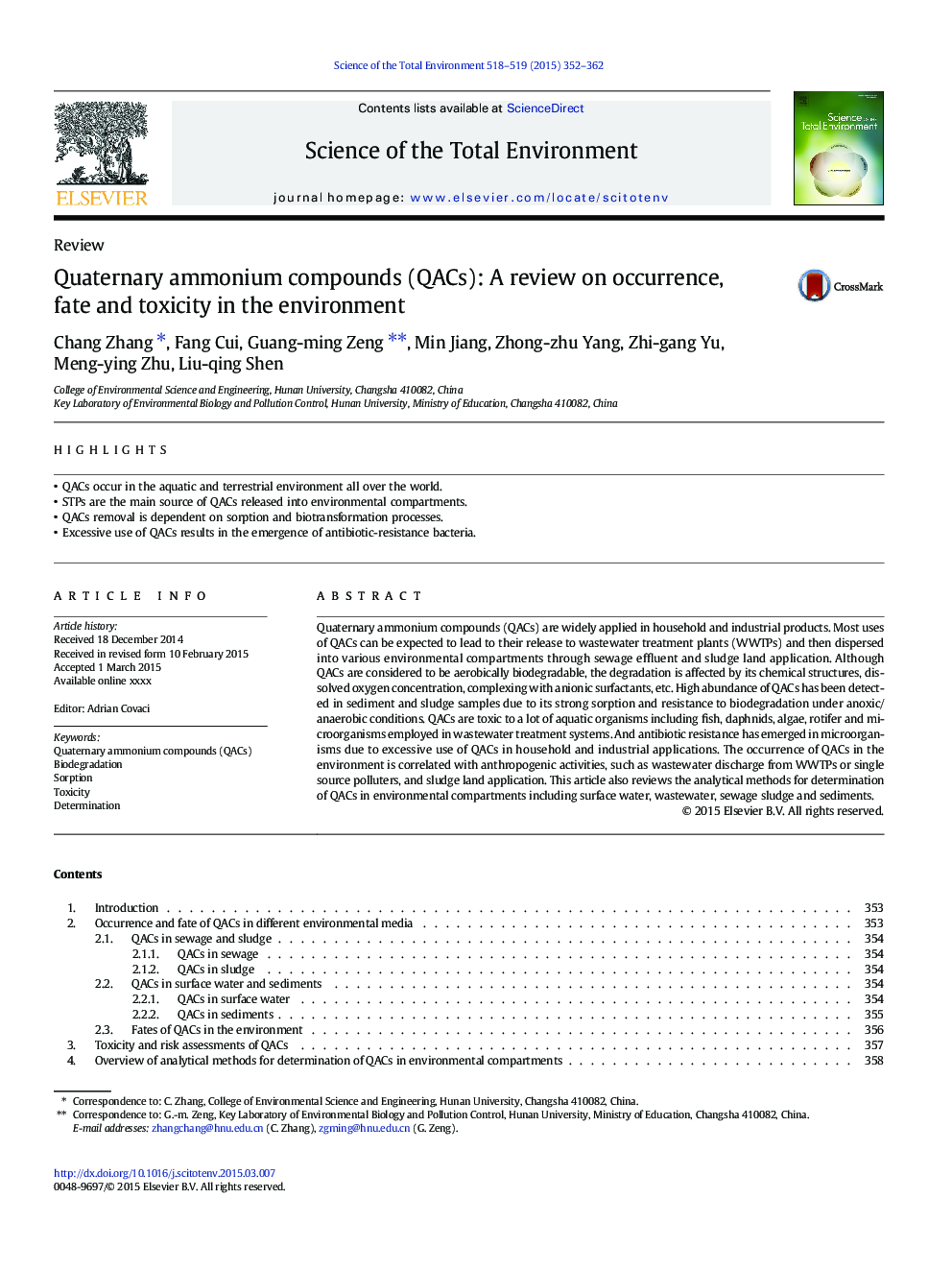| Article ID | Journal | Published Year | Pages | File Type |
|---|---|---|---|---|
| 6326863 | Science of The Total Environment | 2015 | 11 Pages |
Abstract
Quaternary ammonium compounds (QACs) are widely applied in household and industrial products. Most uses of QACs can be expected to lead to their release to wastewater treatment plants (WWTPs) and then dispersed into various environmental compartments through sewage effluent and sludge land application. Although QACs are considered to be aerobically biodegradable, the degradation is affected by its chemical structures, dissolved oxygen concentration, complexing with anionic surfactants, etc. High abundance of QACs has been detected in sediment and sludge samples due to its strong sorption and resistance to biodegradation under anoxic/anaerobic conditions. QACs are toxic to a lot of aquatic organisms including fish, daphnids, algae, rotifer and microorganisms employed in wastewater treatment systems. And antibiotic resistance has emerged in microorganisms due to excessive use of QACs in household and industrial applications. The occurrence of QACs in the environment is correlated with anthropogenic activities, such as wastewater discharge from WWTPs or single source polluters, and sludge land application. This article also reviews the analytical methods for determination of QACs in environmental compartments including surface water, wastewater, sewage sludge and sediments.
Related Topics
Life Sciences
Environmental Science
Environmental Chemistry
Authors
Chang Zhang, Fang Cui, Guang-ming Zeng, Min Jiang, Zhong-zhu Yang, Zhi-gang Yu, Meng-ying Zhu, Liu-qing Shen,
